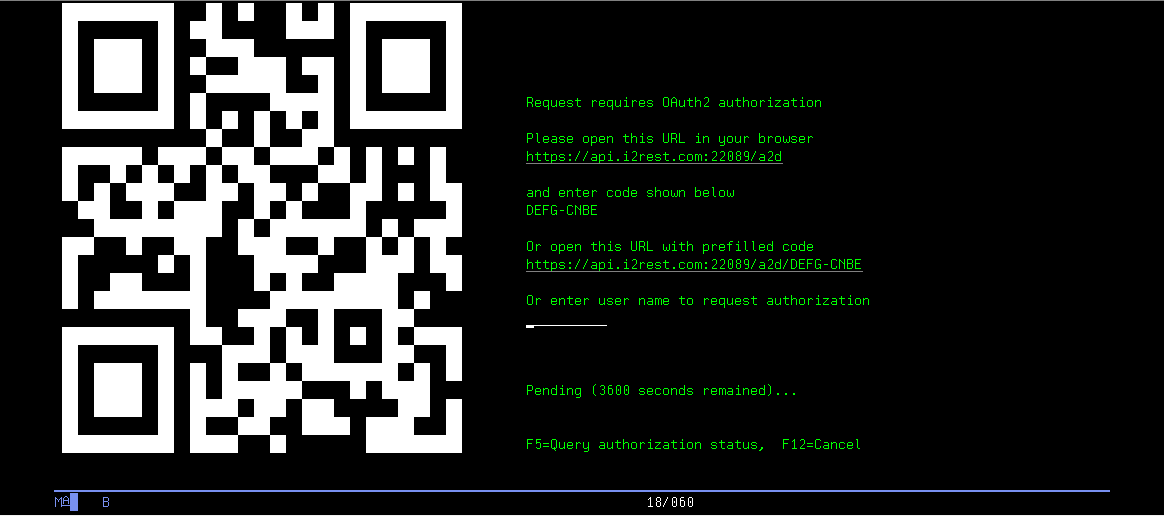Difference between revisions of "Authorization code usecase 1"
Pavel.lobko (talk | contribs) |
Pavel.lobko (talk | contribs) |
||
| Line 30: | Line 30: | ||
;Step 2 | ;Step 2 | ||
:i2Rest Client will provide you with link - go ahead and follow it. | :i2Rest Client will provide you with link - go ahead and follow it. | ||
| − | :[[File:Authorization_code_usecase1-1.png]] | + | :[[File:Authorization_code_usecase1-1.png|600px]] |
<br> | <br> | ||
| − | :Find yourself on | + | :Find yourself on i2Rest bridge page. Enter the Proceed with "Next" button. |
:[[File:Device-flow-usecase1-2.png]] | :[[File:Device-flow-usecase1-2.png]] | ||
<br> | <br> | ||
Revision as of 12:23, 3 June 2020
Lets walk step by step through our example with creating "i2rest.doc" file on "i2restexample" user Google Drive
- Preparations
- At the very beginning your application should be registered as a client (obtaining Device ID and Device Password) on Google (see details).
- Add Google.com SSL certificate CA to your DCM.
- Register your i2Rest Client on your i2Rest Server as a client to enable "bridge mode"
- Step 1
- Execute command
I2REST COMMAND(*Get)
URL('https://www.googleapis.com/drive/v3/files')
OUTPUT(*JOBLOG)
DCMCLIENT(MYCLIENT)
AUTHMETHOD(*BRIDGE)
AUTHID('677815701888-aj80fure8f1laqd3dqvpqtmlandni5an
.apps.googleusercontent.com')
AUTHPW(tI2ezmVGioGwrGk9K2O23Mv5)
AUTHURL('https://accounts.google.com/o/oauth2/v2/auth
')
TOKENURL('https://oauth2.googleapis.com/token')
SCOPE('https://www.googleapis.com/auth/drive.file')
BRIDGEURL('https://api.i2rest.com:22089/a2d')
BRIDGEID(OAUTH21)
BRIDGEPW(oauth21)
- Find yourself on i2Rest bridge page. Enter the Proceed with "Next" button.
- File:Device-flow-usecase1-2.png
- Check the result!
- Here is server response:
Server response (status 200, shown 214 bytes of 214):
{
"kind": "drive#fileList",
"incompleteSearch": false,
"files": [
{
"kind": "drive#file",
"id": "1b-aQhiVeXgAQZVYeftIpuBo2GCvKQzHz",
"name": "i2rest.doc",
"mimeType": "application/msword"
}
]
}


